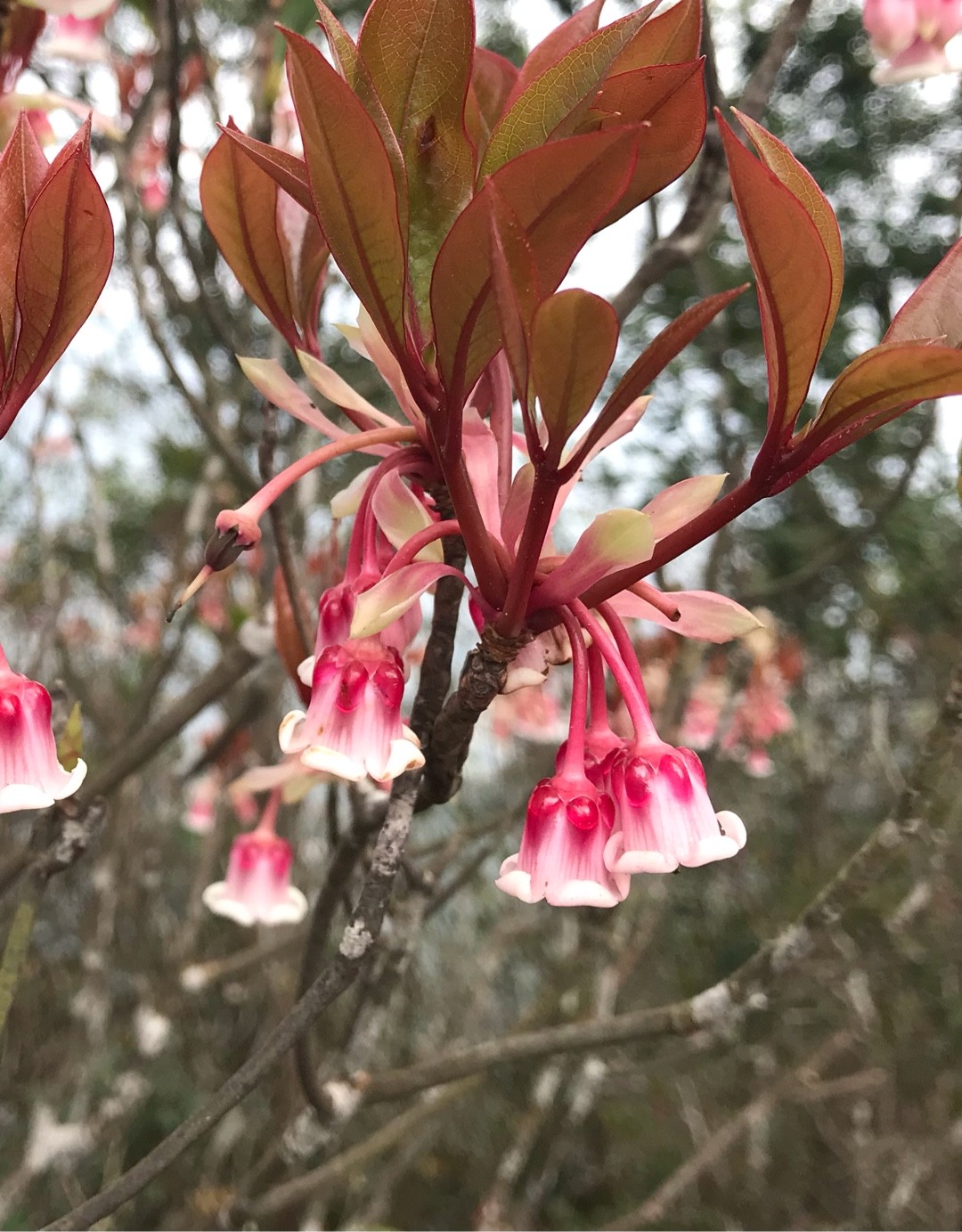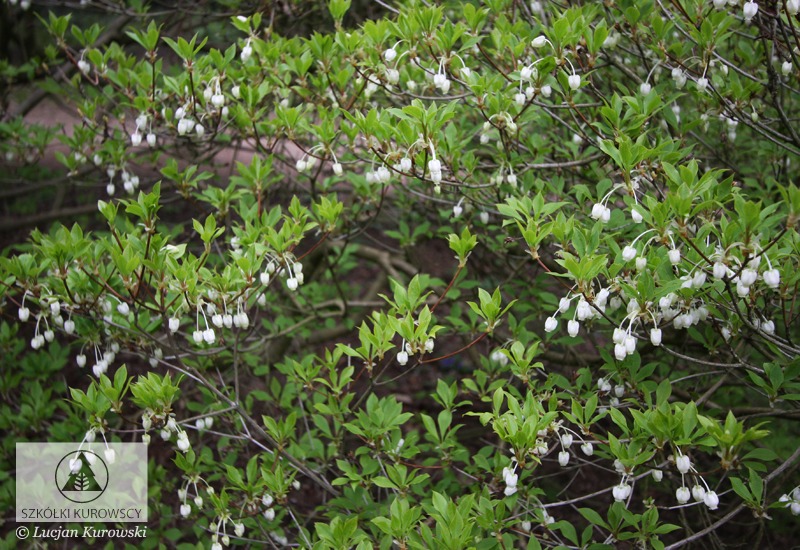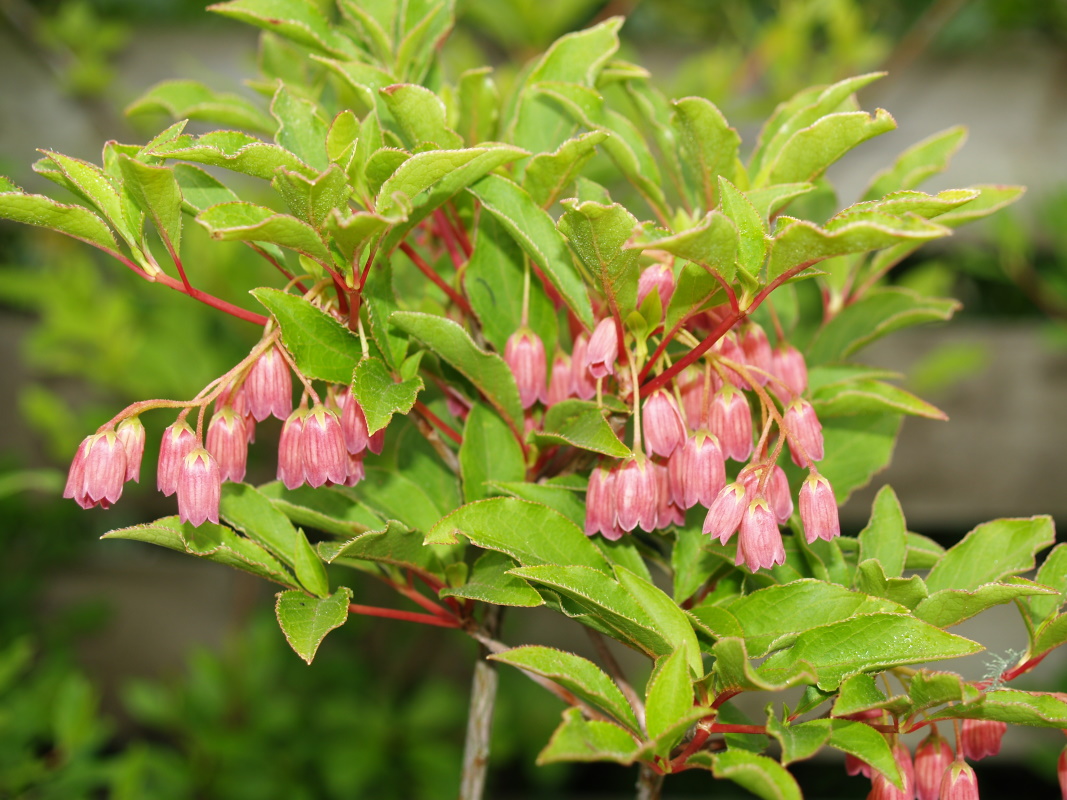Enkianthus: The Beautiful Tree That Blooms In Winter
Enkianthus: The Beautiful Tree That Blooms in Winter
The Enkianthus genus is a small group of deciduous trees and shrubs native to East Asia. They are known for their delicate bell-shaped flowers that bloom in winter or early spring, before the leaves emerge. Enkianthus trees are also prized for their beautiful fall foliage, which can range in color from red to orange to yellow.
Introduction
The genus Enkianthus is named after the Greek words "enkyos" (swollen) and "anthos" (flower), which refers to the unusual blooms of a single species, E. campanulatus. This species is also known as the "pagoda bush" or "winter honeysuckle".
Enkianthus trees are slow-growing and can reach heights of up to 15 feet. They have upright branches and dense foliage. The leaves are oval-shaped and have a serrated edge. The flowers are borne in clusters and can be white, pink, or red. They have a sweet fragrance and attract bees and butterflies.
Enkianthus trees are hardy in USDA zones 5-8. They prefer moist, well-drained soil and partial to full shade. They are relatively pest- and disease-free.
Main Content
Growing Enkianthus
Enkianthus trees are relatively easy to grow. They prefer moist, well-drained soil and partial to full shade. They can be planted in the spring or fall. When planting, amend the soil with compost or other organic matter. Water the tree regularly, especially during the first year after planting.
Enkianthus trees are not as drought-tolerant as some other trees, so it is important to water them during dry periods. Mulching around the tree will help to retain moisture in the soil.
Enkianthus trees do not need to be fertilized often. A light application of fertilizer in the spring will help to promote flowering.
Pests and Diseases
Enkianthus trees are relatively pest- and disease-free. However, they can be susceptible to aphids, scale, and powdery mildew. If you see any pests or diseases on your tree, treat them immediately with an appropriate pesticide.
Propagation
Enkianthus trees can be propagated by seed, but this is not the most reliable method. The best way to propagate Enkianthus trees is by air layering or softwood cuttings.
Air layering is a process in which a branch of the tree is encouraged to root while still attached to the parent plant. To air layer an Enkianthus tree, make a cut in the bark of the branch and insert a piece of moist sphagnum moss. Wrap the moss in plastic wrap and secure it with a rubber band. The branch will eventually root and can be cut from the parent plant and transplanted.
Softwood cuttings are taken from new growth in the spring. The cuttings should be about 4 inches long and have at least two sets of leaves. Remove the lower leaves and dip the cuttings in rooting hormone. Plant the cuttings in a well-draining potting mix and keep them moist. The cuttings will root in about two weeks.
Winter Interest
Enkianthus trees are not only beautiful in the spring and fall, but they can also provide winter interest in the garden. The bare branches of the tree can be quite striking against a backdrop of snow. In addition, the bark of some Enkianthus species is attractive and can add interest to the winter garden.
Conclusion
Enkianthus trees are a beautiful and versatile addition to any garden. They are relatively easy to grow and care for, and they provide interest in the garden throughout the year. If you are looking for a tree that will add beauty and color to your landscape, consider an Enkianthus tree.
Enkianthus is a genus of shrubs or small trees in the heath family (Ericaceae). The name comes from the Greek words "enkyos" meaning "pregnant" and "anthos" meaning "flower", referring to the swollen urn-shaped flowers. The most common species, Enkianthus campanulatus, is commonly called redvein enkianthus. It is an upright, deciduous shrub that typically grows 6-8 feet tall. The leaves are blue-green and turn orange and red in fall. The flowers are bell-shaped and red-veined, and they bloom in late spring to mid-summer.
Enkianthus is a relatively rare plant, but it can be found in cultivation in some parts of the world. It is best grown in full sun or partial shade in moist, well-drained soil. It is tolerant of acidic soils and can be susceptible to pests and diseases.
If you are interested in learning more about enkianthus, I recommend visiting the Garden Wiki. This website has a wealth of information about the genus, including species profiles, cultivation tips, and photos.
FAQ of enkianthus
Here are the 5 most frequently asked questions about Enkianthus, along with valuable insights and solutions:
1. What is Enkianthus?
Enkianthus is a genus of flowering plants in the Ericaceae family. There are about 10 species of Enkianthus, which are native to East Asia. Enkianthus trees are known for their beautiful spring flowers, which can be white, pink, or red. The leaves of Enkianthus trees are also attractive, turning shades of yellow, orange, and red in the fall.
2. What are the different types of Enkianthus?
The most common type of Enkianthus is Enkianthus campanulatus, which is native to Japan. This species has white flowers that bloom in early spring. Other popular types of Enkianthus include Enkianthus perulatus, which has pink flowers, and Enkianthus serotina, which has red flowers.
3. How to care for Enkianthus?
Enkianthus trees are relatively easy to care for. They prefer moist, well-drained soil and full sun to partial shade. Enkianthus trees are not very tolerant of drought, so it is important to water them regularly during the summer months. Enkianthus trees are also susceptible to pests and diseases, so it is important to inspect them regularly and take preventive measures.
4. Where to plant Enkianthus?
Enkianthus trees can be planted in a variety of settings, but they do best in USDA hardiness zones 5-8. They are a good choice for planting in borders, shrub beds, or woodland gardens. Enkianthus trees can also be planted as specimens.
5. How to propagate Enkianthus?
Enkianthus trees can be propagated by seed, but this method is not always successful. A more reliable method is to propagate Enkianthus trees by air layering or by taking cuttings.
Image of enkianthus
5 different images of Enkianthus from Pinterest:
- Enkianthus campanulatus, also known as the Japanese redbud, is a deciduous shrub or small tree with showy, bell-shaped flowers that bloom in early spring.

- Enkianthus cernuus, also known as the drooping enkianthus, is a deciduous shrub or small tree with drooping branches and clusters of white or pink flowers that bloom in late spring to early summer.
- Enkianthus quinqueflorus, also known as the five-flowered enkianthus, is a deciduous shrub or small tree with clusters of five-petaled white or pink flowers that bloom in late spring to early summer.

- Enkianthus perulatus, also known as the lace enkianthus, is a deciduous shrub or small tree with lace-like foliage and clusters of white or pink flowers that bloom in late spring to early summer.

- Enkianthus pauciflorus, also known as the few-flowered enkianthus, is a deciduous shrub or small tree with few-flowered clusters of white or pink flowers that bloom in late spring to early summer.


Post a Comment for "Enkianthus: The Beautiful Tree That Blooms In Winter"